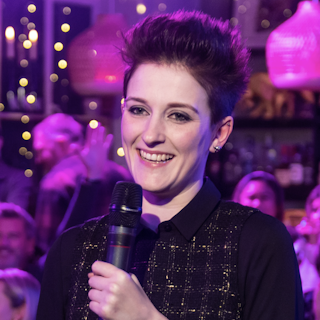Five advertising trends for 2020 from Australasia’s top creatives
As we reach the end of yet another year, indeed the end of a decade, it falls on tradition to wrangle together what 2020 and beyond will bring. The Drum asks Australasia’s top creatives what trends they are excited about for the future.

Five advertising trends for 2020 from Australasia’s top creatives
Voice
Probably one of the most talked-about trends of the teens has been voice. The year of voice seems to have pretty much dominated the latter half of the decade, with statistics from the likes of ComScore, predicting that by the year 2020, 50% of all online searches will be performed with voice search.
David Ponce de León, executive creative director at Ogilvy Australia, believes that we are only starting to scratch the surface of the immense potential of smart speakers and other connected devices like phones.
“There are creative and commercial opportunities galore for brands who invest in this area, but only if they are innovating,” he explains. “They need to get there first. If they are only following or copying, it might be too late.”
The human race is constantly finding ways to make life easier, with that in mind, Paul Swann, executive creative director, Thinkerbell Sydney asks how antiquated is it that we still tap away on keyboards rather than using our voices to achieve the task at hand.
“2020 will be the year we see a significant acceleration in voice-based marketing activity. Voice assistants on mobile or home devises are changing the way we search for information and access services and due to the arms races taking place amongst the competing platforms their accuracy has come on in leaps and bounds.
“Consequently, brands have increasingly begun to experiment with how they best utilise voice technology. It’s an exciting new creative playground for changing behaviours and building distinctive brands.”
Marcus Tesoriero, executive creative director at The Brand Agency adds that voice technology is evolving daily to find its place in the world. As AI becomes more seamless in its learning of intelligent responses and reaction to emotional tones, the more naturally it will become a part of peoples’ lives.
“Aspects of the film, Her, are not that far out of reach,” he enlightens. “Although falling in love with your audio assistant may be. I’m already seeing voice technology allowing our clients to connect with consumers in a more organic way.”
Augmented reality
Global spending on augmented and virtual reality is expected to reach $18.8bn next year. In the past couple of years, AR has hit the headlines more and more. Back in 2016, AR hit a new level of appreciation with the launch of Pokémon GO, allowing users to catch their child-hood favourites in the ‘real’ world.
Snapchat has proven strength in AR with the continued development of its filter lenses giving people the ability to shed years of their faces or become entirely someone else, as well as its 'Shoppable AR'.
After a few false starts, due mainly to excitement overtaking technology, AR is finally blooming, declares Edu Pou, executive creative director at We Are Social.
“Not only the improvements on devices and software have created a fertile ground for ‘augmented creativity’ but there’s also a real appetite for AR from a savvy audience. Be it functionality-driven solutions or entertaining games that turn any environment into a playground, there’ll be AR experiences for everyone.
“They’ll spread like the apps did 10 years ago. And again, just like with the apps, after a while, only the strongest ones will prevail. Tech Darwinism is brutal but necessary.”
On the other hand, while Michael Abdel, founder and executive creative director of The Sphere Agency is looking forward to new tech like AR, proving its worth is going to be a slower, more gradual process than many may think.
“When it comes to cutting-edge technology, it can take years before the full effect is felt. So, while I’m excited about some new technology, I also try to be realistic about what its immediate impact will be.
“I could easily share my excitement for AR and write something like: ‘To date, augmented reality has proven to be another gee-whiz tool for agencies. While AR will likely retain its cool factor, its test for 2020 is in proving it can live up to the hype.’
“The only problem is that’s exactly what Brian Morrissey already wrote way back in 2009 for AdAge when predicting trends for 2010. I simply changed the ‘2010’ date to ‘2020’.
New trends on the block
Gaming has finally become cool and even though some may still believe that gamers are male, it’s pretty even across the feild. And now brands are getting on board and using creative ways to connect with consumers, developing that all-important relationship.
Matt Stoddart, creative director, TBWA\Australia is particularity excited to see the blending of real worlds and fictitious ones.
In 2019, we saw Wendy’s Fortnite campaign where fans could create bespoke characters to destroy freezers at all the burger restaurants in the game - perfectly aligned with their key product benefit of - no frozen beef.
“To find such an intrinsic product relevance in the most popular online game in the world was simply genius. Whether people actually bought more Wendy’s burgers, I’m not sure, but the brand certainly gained a lot more street cred.
“The Samsung Galaxy Fortnite campaign was also pretty cool. They created an epic looking Galaxy character skin, but you could only get it by buying the new Galaxy 9 phone in real life. A really clever way to create a desire to purchase, and a heap of earned media hype. I’m really looking forward to seeing more brands find an entertaining way to be relevant in this channel next year.”
Fake news has been a popular buzzword in recent years, but another term that has caused many arguments is the deep fake. Although many may find them amusing and a bit of a laugh, these seemingly realistic videos have become more problematic, with many calling for action to combat the misuse of the system.
“Their number has risen 85% in the last 12 months, with over 15,000 now the web; most on social platforms,” says Richard Morgan, executive creative director, AnalogFolk Sydney. “Precisely because it raises so many ethical dilemmas, with the ability to take fake news to a whole new level. It’s also why there’s an opportunity for our industry to lead the way by finding innovative, clever ways of harnessing this technology for good. To me, that’s exciting.”
“There’s an old saying that new weapons are too powerful to be left only for the bad guys to use. Or maybe I just made that up. Either way, that’s my feeling on the rise of deep fake videos; a technology that is both scary and inevitable in equal measure.”
Social media has developed monstrously over the past decade, with many who have remained now thriving, and new ones appearing sporadically. Within the last five years, there has been a rise in the number of studies looking at how extreme social media use can impact negatively on health.
Maria Devereux, creative director, Colenso BBDO is excited by the cultural backlash against social media. “Research is emerging which shows a clear connection between our unhealthy obsession with social media and the increase in poor mental health.
“As a result, the concept of social self-care is gaining traction and inspiring people to carefully manage both their social media use and they're ‘always on’ mentality. This year we’ve seen Instagram remove public like counts so I’m super excited to see how this cultural shift will continue to reshape and influence the social media platforms we know and love.”

